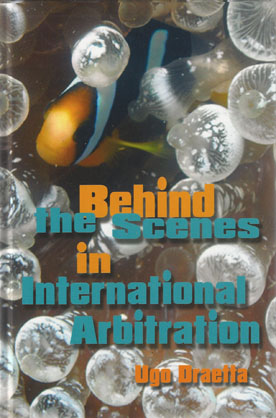
Behind the Scenes in International Arbitration reveals what really happens behind the scenes of the large stage of the international arbitration -- a world of its own.
Though arbitration has become a big business, its proceedings are not open to the large public, because of their confidential -- and sometimes opaque -- nature. Thus, Ugo Draetta offers his perspective as an insider, outlining some behaviours of the various players in the arbitration stage, which are sometimes irrational, emotional, bizarre or counterproductive.
Drawn from the personal experiences of the author's 30 years in the field, the book is essentially based on a number of real life anecdotes (obviously on a no name basis), some of which will have you laughing out loud. The players identified in the book are (a) the Parties, (b) the outside counsel, (c) the in-house counsel, (d) the arbitrators, and (e) the arbitral institutions. A separate chapter is devoted to each one of these players, ending with a “memo” summarizing the behaviours to be avoided.
Behind the Scenes in International Arbitration is not a legal book, nor a book dealing with “ethics” of the arbitration... As examples, the author considers the "King Solomon" syndrome of many arbitrators, the prima donna attitudes, the loneliness of the sole arbitrator, and compares the number of arbitration cases with the number of shark attacks resultant of available statistics.
This book aims to increase the efficiency, seriousness and dignity of arbitration proceedings, to the advantage of those who are presently players or aspire to become players in the arbitration stage.